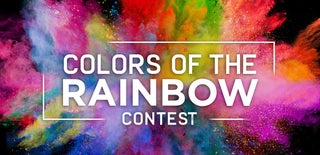Introduction: LED Logo Sign
This project was created by the BuildClub at the NewMakeIt makerspace in Newmarket, Ontario, Canada.
We wanted to demonstrate various skills and utilize various pieces of equipment available to members including the CNC, laser cutter, electronics lab and paint booth.
This project demonstrates the technique to make a stunning and impressive LED logo that will delight your friends and/or customers. We utilized the design of our makerspace logo, but you can design one for your own needs.
Step 1: Components You Need
1. WS2812B Individually Addressable LED Strip Light DC 5V like this one: (https://tinyurl.com/y7wv3sgu)
2. Arduino Uno or Nano
3. USB cable with Type-A plug
4. 1/2” or 3/4” MDF (enough to layer your logo/sign to a depth of more than an inch
5. 1/4" MDF for back panels of logo
6. 1/4" White translucent acrylic
7. 22 gauge electrical wire (Black, red, white)
8. Hot glue and gun
9. Gorilla/super glue
10. Computer with Arduino IDE (https://www.arduino.cc/)
11. FastLED Ardduino library (http://fastled.io/)
Step 2: Preparing the Encasement
1. We took the NewMakeIt logo into V-carve and cut 2 layers in 3/4” MDF, with a 3rd layer for the bottom arch on the CNC
2. Each layer was stacked, glued and sanded
3. The resulting enclosure was then primed and painted
NOTE: The LED’s best diffuse at about 1 1/4” inches. Any less and you may see the LED bulb rather than just the light effect
Step 3: Front Acrylic Panels
1. The same logo was edited in CorelDraw for the inner shapes of the logo
2. These shapes were laser cut in 1/4” white translucent acrylic
3. The fit was close to perfect with a little sanding required in only a couple of spots
Step 4: Back 1/4” MDF Panels
1. The same designs for the front Acrylic were cut in 1/4” MDF with 1” holes also cut to allow the panels to be pulled to access the LEDs and electronics and to feed the wires between each section and the Arduino
Step 5: Solder and Wire the LEDs
1. We held the LED strips starting at the base of the panels and run them straight to the upper edges cutting at the nearest ‘cut point’
2. We cut second and third strips as needed to ensure the panels had enough LED density so no point was more than approx an 1” from a LED
3. Each LED strip was soldered with three wires at the base (see arrow on LED to see the direction of current flow. Arrows point away from the base)
4. Each Positive and Ground point was connected to the next panels Positive and Ground
5. The wires soldered to the center point marked DI were cut long enough to reach the Arduino and soldered to individual pins so each panels signal could be independently controlled if needed
6. The Positive wire was soldered to the Arduinos 5v pin, the Ground to the Arduino Ground pin
7. The Led Strips were fed though the 1” hole in the MDP back panels and the tape cover removed
8. The strips were hot glued in place (Note: important to hot glue wires down also so they don't cast shadows on the front panels.)
Step 6: Programming the Arduino
1. The Arduino was connected to a computer using a USB
2. The Arduino IDE was started and the matching Arduino selected from the Tool menu
3. FastLED library was imported into the Arduino IDE under the Sketch menu - Include Library - Add .ZIP library
4. Under File menu - Examples - FastLED - DemoReel 100 was used for this project
5. In the Demo Reel 100 sketch edit the line for Number of LEDS to the maximum number of LEDS in your longest line (not total number of LEDs just the maximum in the longest strip). This will mean that the code will treat each LED strip the same and the 1st LED in each string will be LED1, the second LED2 etc. The light patterns will then travel up and down your logo in harmony.
6. Also edit which Arduino Pin you have connected to the LEDs and create more values for each Pin if you have more than one ... like in our project.

Participated in the
Colors of the Rainbow Contest








